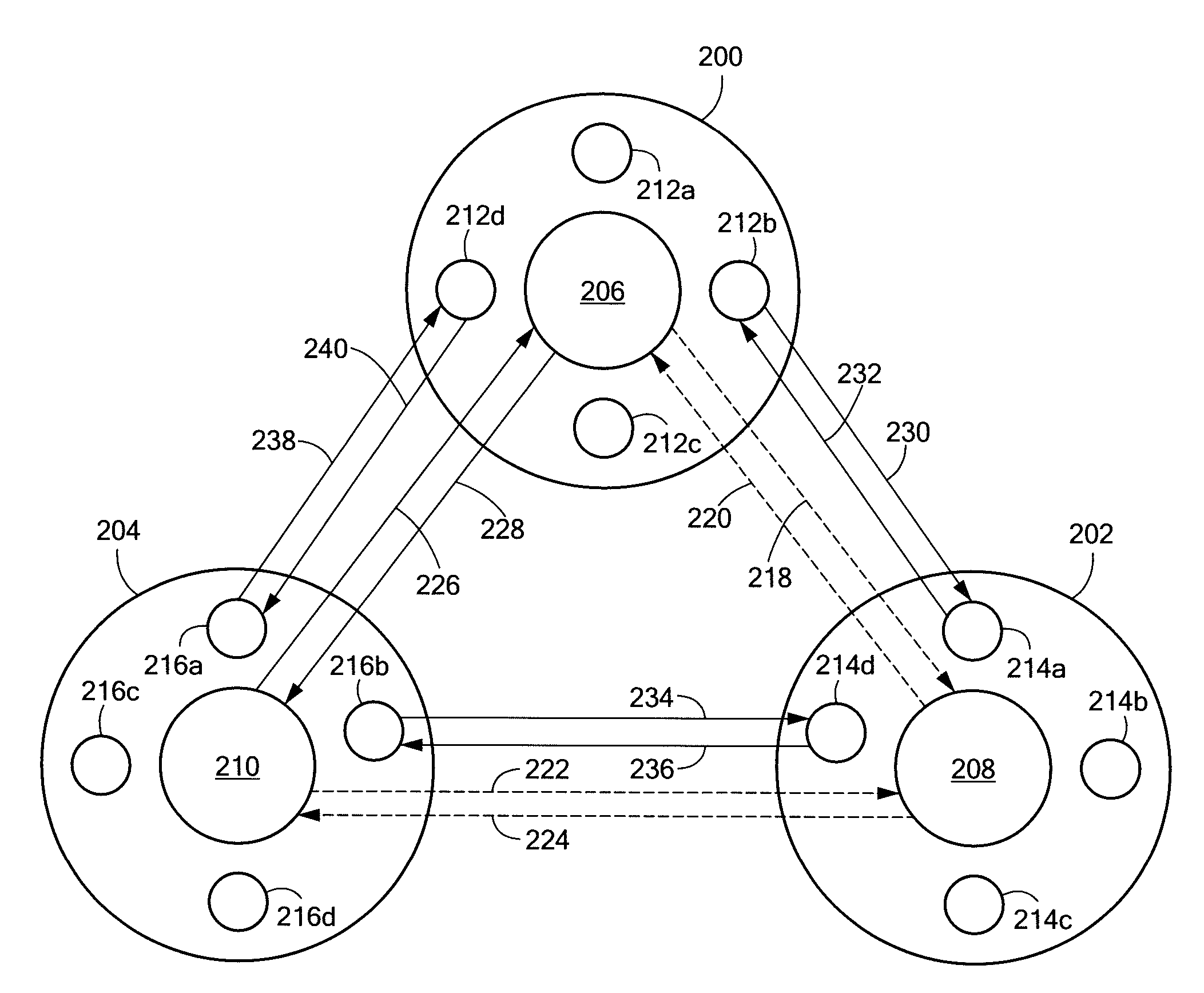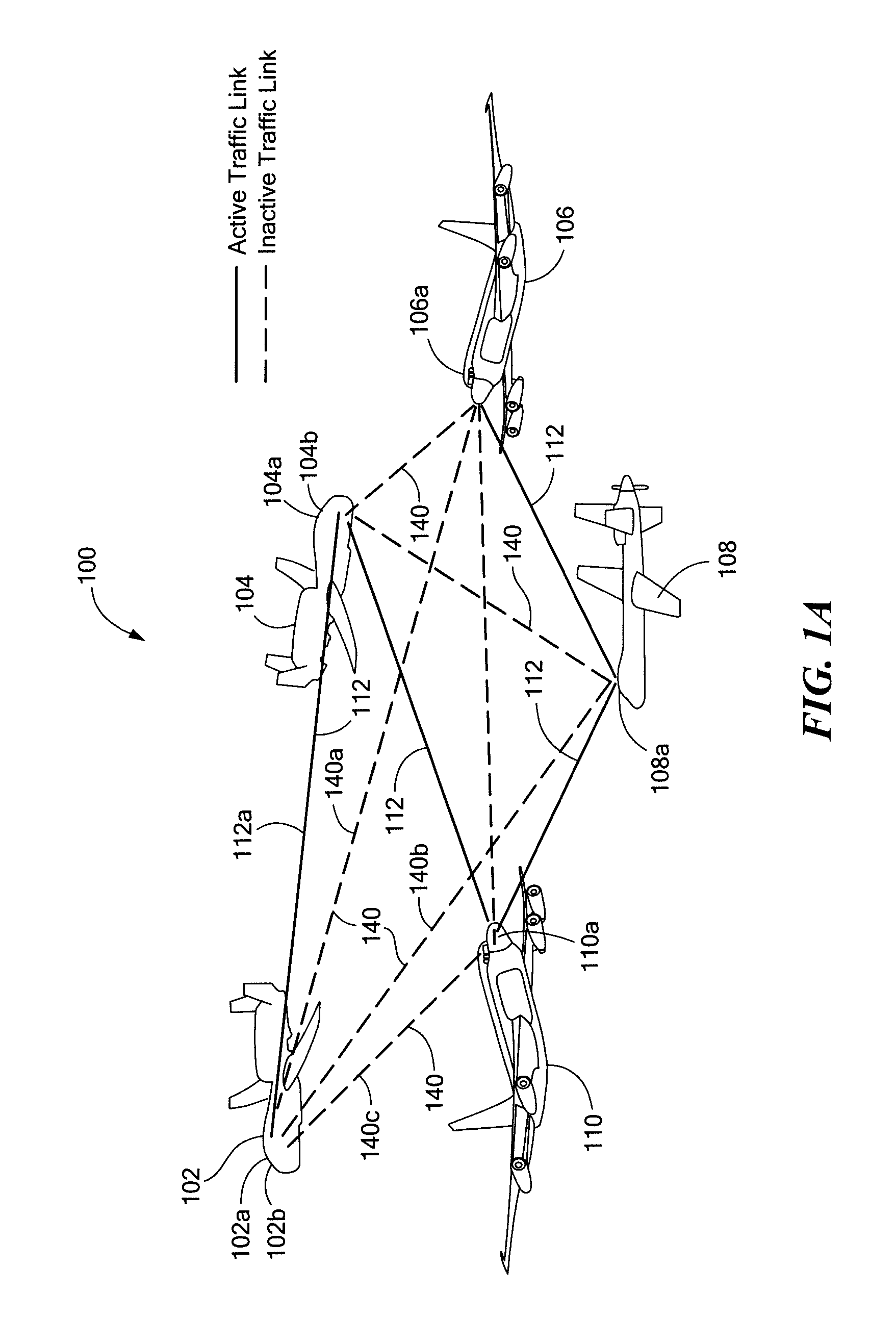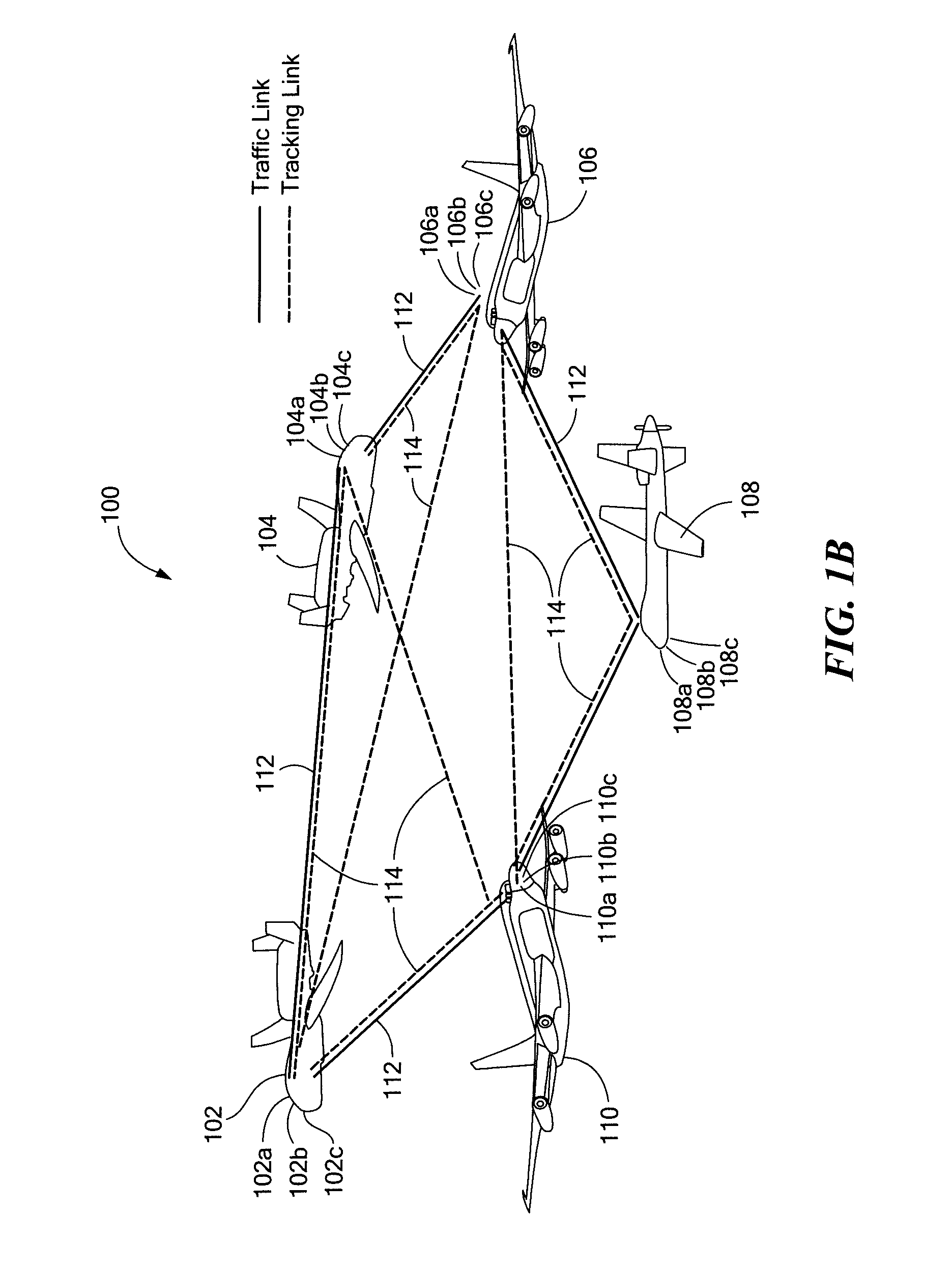Free-space optical mesh network
a free-space optical and mesh network technology, applied in the field of free-space optical communication systems, can solve the problems of poor resilience, low throughput, and high latency of low-connectivity systems
- Summary
- Abstract
- Description
- Claims
- Application Information
AI Technical Summary
Benefits of technology
Problems solved by technology
Method used
Image
Examples
Embodiment Construction
[0017]Before describing the present disclosure, some introductory concepts and terminology are explained. The term “node degree” is herein used to refer to the number of links terminating at a given node within a network. The term “meth network” is herein used to refer to any network with a high node degree, generally greater than 2. The term “optical terminal” refers to any apparatus or device capable of transmitting and / or receiving free-space optical beams. It will be appreciated that the optical terminals herein may further be capable of receiving data and / or tracking remote optical terminals. The terms “hop”, “hopping”, and “beam hopping” all generally refer to the process of repointing a transmitted free-pace optical beam from a first direction to a second direction and / or reconfiguring an optical terminal to receive such a beam. The term “traffic link” refers to any communications link capable of carrying user data at a high data rate and may be either unidirectional or, more...
PUM
 Login to View More
Login to View More Abstract
Description
Claims
Application Information
 Login to View More
Login to View More - R&D
- Intellectual Property
- Life Sciences
- Materials
- Tech Scout
- Unparalleled Data Quality
- Higher Quality Content
- 60% Fewer Hallucinations
Browse by: Latest US Patents, China's latest patents, Technical Efficacy Thesaurus, Application Domain, Technology Topic, Popular Technical Reports.
© 2025 PatSnap. All rights reserved.Legal|Privacy policy|Modern Slavery Act Transparency Statement|Sitemap|About US| Contact US: help@patsnap.com



